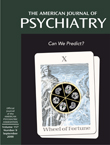Nonconvulsive Status Epilepticus After ECT
Ms. A, an 87-year-old woman, was admitted to a geriatric psychiatry unit with a diagnosis of delirium due to a urinary tract infection. She had a history of major depression and was maintained with desipramine, 50 mg b.i.d., and sertraline, 100 mg/day. The urinary tract infection was treated with trimethoprim/sulfamethoxazole, 160/800 mg b.i.d., for 5 days. The delirium precipitated a major depressive episode, and Ms. A was referred for ECT. A computed tomography scan of her head revealed moderate cerebral atrophy and minor periventricular deep white matter disease but no focal lesions.The first ECT treatment, delivered in the right unilateral configuration, lasted 75 seconds. Fifteen minutes after the procedure ended Ms. A had a generalized tonic-clonic seizure that was terminated with methohexital, 60 mg i.v. Once the seizure ended, she became more alert.On the psychiatry unit Ms. A was obtunded and had slight clonic movements of the left side of her face. Lorazepam, 2 mg i.v., was administered and followed by loading with phenytoin, 1.4 mg i.v. An EEG revealed no normal background activity and almost continuous electrographic seizures over the right hemisphere of the brain. Ms. A was transferred to the intensive care unit, where repeat EEGs showed no signs of ictal activity. The neurology service felt that further ECT was not an option given the focality of her seizure. Ms. A was discharged to a nursing home, where she was eventually lost to follow-up.
References
Information & Authors
Information
Published In
History
Authors
Metrics & Citations
Metrics
Citations
Export Citations
If you have the appropriate software installed, you can download article citation data to the citation manager of your choice. Simply select your manager software from the list below and click Download.
For more information or tips please see 'Downloading to a citation manager' in the Help menu.
View Options
View options
PDF/EPUB
View PDF/EPUBGet Access
Login options
Already a subscriber? Access your subscription through your login credentials or your institution for full access to this article.
Personal login Institutional Login Open Athens loginNot a subscriber?
PsychiatryOnline subscription options offer access to the DSM-5-TR® library, books, journals, CME, and patient resources. This all-in-one virtual library provides psychiatrists and mental health professionals with key resources for diagnosis, treatment, research, and professional development.
Need more help? PsychiatryOnline Customer Service may be reached by emailing [email protected] or by calling 800-368-5777 (in the U.S.) or 703-907-7322 (outside the U.S.).

